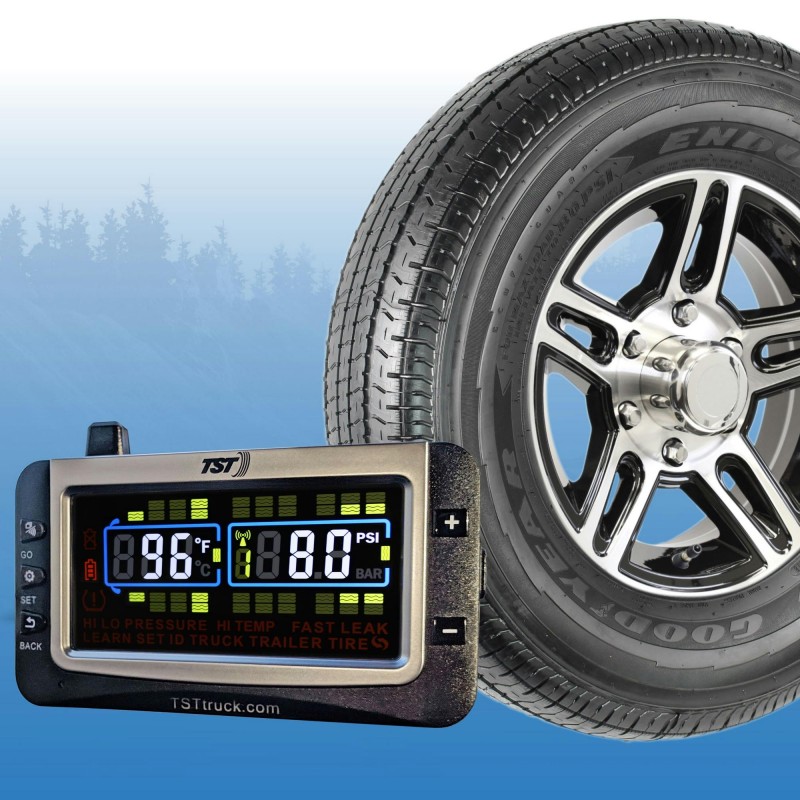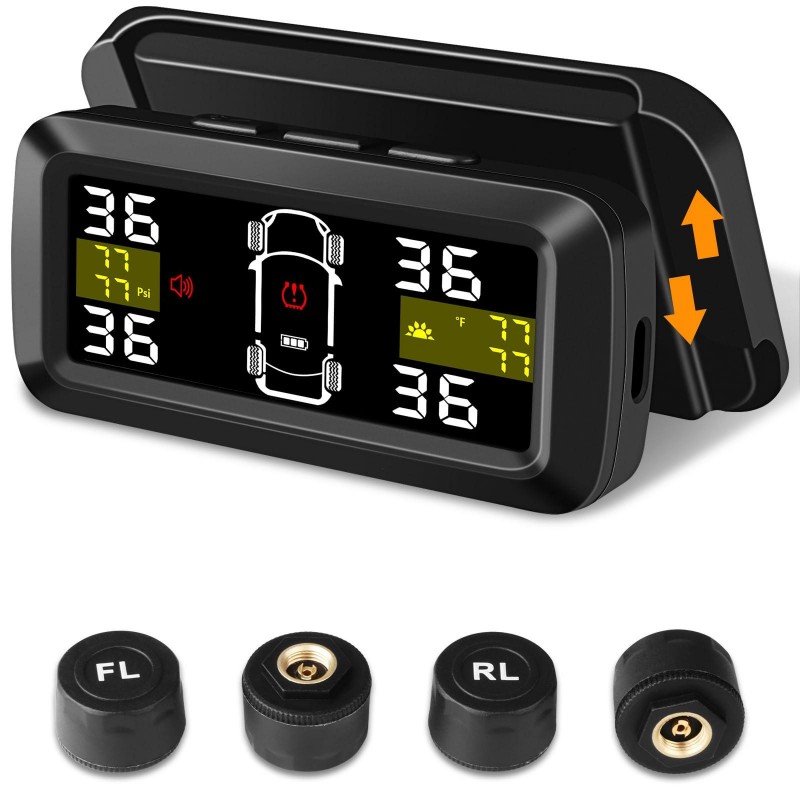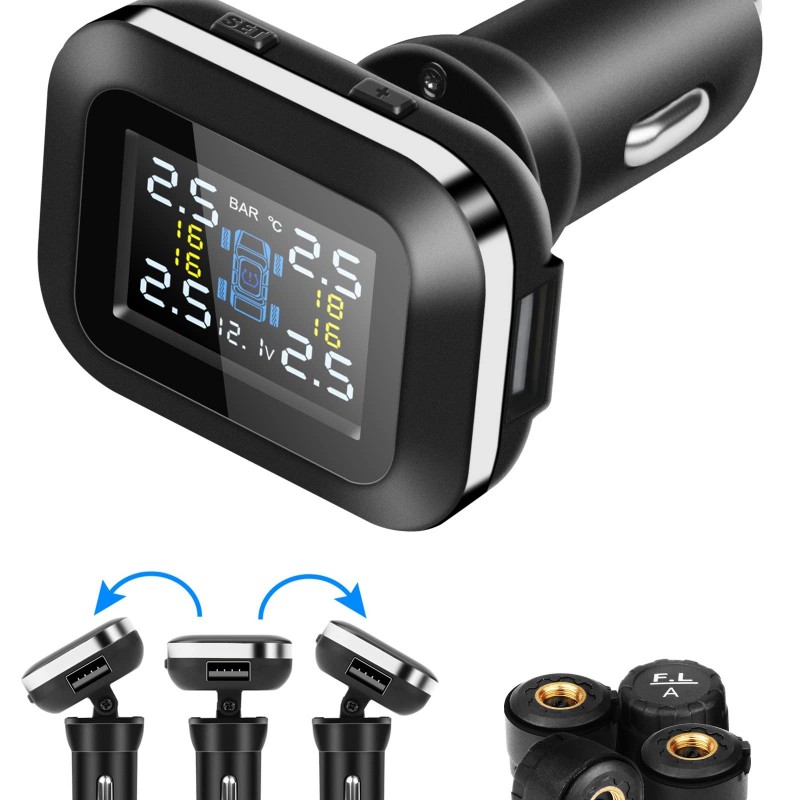Keeping track of tire pressure is crucial for vehicle safety, fuel efficiency, and overall performance. Tire pressure monitoring systems provide a reliable way to ensure that tires remain inflated to the proper levels. These systems alert drivers to changes in tire pressure, helping to prevent potential hazards such as blowouts or decreased traction on the road. In recent years, the technology behind tire pressure monitoring systems has advanced significantly, making them more accurate and essential to modern vehicles. This article aims to provide an in-depth look at tire pressure monitoring systems, exploring their functions, benefits, types, and maintenance practices. By understanding these systems, drivers can make informed choices that enhance roadside safety and vehicle longevity.

The Importance of Proper Tire Pressure
Before delving deeper into tire pressure monitoring systems, it’s important to understand why tire pressure matters in the first place. Proper tire pressure affects several key aspects of vehicle performance and safety:
- Fuel Efficiency: Under-inflated tires increase rolling resistance, which can lead to higher fuel consumption. Maintaining the correct tire pressure can help maximize fuel efficiency, saving drivers money over time.
- Tire Wear: Incorrect tire pressure can lead to uneven tire wear. Over-inflated tires may wear more quickly in the center, while under-inflated tires tend to wear on the edges. This uneven wear can shorten the lifespan of the tires, requiring premature replacements.
- Vehicle Handling: Properly inflated tires provide better traction and handling. When tires maintain their shape and pressure, they make optimal contact with the road, improving cornering, braking, and overall stability.
- Safety: One of the foremost concerns with tire pressure is safety. Tires that are under- or over-inflated increase the risk of blowouts and instability, particularly during high-speed driving or adverse weather conditions.
Given these critical factors, tire pressure monitoring systems serve as an essential tool for modern vehicle maintenance. They help ensure that tires remain in optimal condition, contributing to better overall driving experiences.
What Are Tire Pressure Monitoring Systems?
Tire pressure monitoring systems (TPMS) are electronic systems designed to monitor the air pressure inside tires. They provide real-time data to the driver and alert them when tire pressure falls below a certain threshold. There are two primary types of TPMS: direct and indirect.
- Direct TPMS: These systems use pressure sensors located inside each tire to measure tire pressure accurately. The sensors transmit data to a receiver in the vehicle, providing real-time monitoring and alerts. Direct systems are generally more accurate since they measure pressure directly at the source.
- Indirect TPMS: Indirect systems monitor the rotational speed of tires instead of direct pressure. They use wheel speed sensors, often part of the vehicle’s Antilock Braking System (ABS), to detect differences in the speed of individual wheels. For example, if a tire is under-inflated, its circumference will be smaller than that of a properly inflated tire, causing it to rotate at a different speed. While less accurate than direct systems, indirect TPMS can still alert the driver to potential issues.
Both types of tire pressure monitoring systems play a crucial role in maintaining tire health and vehicle performance. They provide timely warnings that empower drivers to take corrective actions before problems escalate.
How Tire Pressure Monitoring Systems Work
To fully appreciate tire pressure monitoring systems, it’s essential to understand how they operate. The functioning of TPMS revolves around a network of sensors and processors that gather and convey tire pressure data.
- Sensor Technology: In direct TPMS, each tire contains a pressure sensor, usually mounted on the inner tire surface, near the valve stem. These sensors monitor tire pressure constantly and transmit the readings wirelessly to the vehicle’s onboard computer system.
- Wireless Communication: The data sent by the sensors is typically transmitted using radio frequency (RF) signals. The onboard computer processes these signals, converting them into readable information for the driver.
- Warning Alerts: When tire pressure falls below the recommended level, the TPMS triggers a warning light on the dashboard. Some advanced TPMS configurations may provide additional details, such as which tire is affected or the actual pressure reading.
- Resetting the System: After inflating tires to the correct pressure, certain TPMS may require a reset. This can often be done via controls on the dashboard, though resetting procedures vary between different vehicle makes and models.
Understanding how these systems work can help drivers effectively manage tire health. By adhering to proper tire maintenance practices, the functionality and reliability of tire pressure monitoring systems can be optimized.
Benefits of Tire Pressure Monitoring Systems
Integrating tire pressure monitoring systems into vehicles offers a multitude of benefits. These advantages extend beyond mere convenience, enhancing safety, performance, and maintenance.
- Enhanced Safety: The primary benefit of TPMS is improved safety. By ensuring that tires maintain proper pressure, drivers can reduce the risk of tire blowouts and improve overall vehicle handling, especially in difficult driving conditions.
- Increased Fuel Efficiency: Correctly inflated tires minimize rolling resistance, which directly contributes to fuel savings. TPMS alerts address pressure dips sooner, fostering efficient fuel usage and less frequent fill-ups.
- Prolonged Tire Life: Consistent monitoring and prompt alerts help prevent conditions that lead to uneven tire wear. By addressing tire pressure issues early, drivers can maximize tire lifespan, delaying costly replacements.
- User Convenience: Many modern TPMS provide real-time updates on tire pressure, making it simpler for drivers to stay informed. Advanced systems may even offer smartphone connectivity, allowing users to access data remotely.
- Improved Performance: Properly inflated tires contribute to better handling and cornering. The stability gained from uniform tire pressure allows drivers to navigate turns with confidence.
The benefits of tire pressure monitoring systems highlight their value in enhancing the overall driving experience. As technology evolves, TPMS continue to innovate, becoming even more valuable to drivers and vehicle manufacturers.
Common Issues with Tire Pressure Monitoring Systems
Although tire pressure monitoring systems offer significant advantages, they are not immune to issues. Understanding potential problems can help drivers maintain their systems effectively.
- Sensor Failure: Like any electronic component, TPMS sensors can fail over time. Battery depletion is a common cause; most sensors typically last between five to ten years, depending on the specific model.
- Incorrect Calibration: If tires are inflated beyond recommended levels or if tires are replaced without recalibrating the TPMS, it can lead to incorrect readings. Addressing tire replacements promptly and ensuring the system is calibrated can prevent this.
- Wireless Signal Interference: TPMS relies on wireless communication to relay tire pressure data. Interference from electronic devices, metal structures, or even faulty wiring can hinder proper signal transmission.
- Environmental Factors: Changes in temperature can affect tire pressure significantly. Rapid temperature changes, such as a drop in temperature on winter mornings, may lead to alerts even if tires remain properly inflated.
- System Reset Errors: Some TPMS may experience challenges during reset attempts after tire pressure adjustments. When this occurs, drivers may need to consult the vehicle’s manual or a professional for assistance.
By being aware of these common issues, drivers can act proactively to address any problems with their tire pressure monitoring systems, ensuring optimal performance.

Installation and Maintenance of Tire Pressure Monitoring Systems
Proper installation and maintenance are vital for ensuring the effectiveness of tire pressure monitoring systems. Here are some steps to follow:
- Professional Installation: If a vehicle does not come equipped with a TPMS, choosing the right system is crucial. Professional installation is often recommended as it ensures proper sensor placement and calibration.
- Regular Inspections: Periodically check the functionality of the TPMS. Look for warning lights on the dashboard, and periodically test pressure readings manually using a tire gauge.
- Battery Replacement: For direct TPMS, be mindful of sensor battery life. Replacing the batteries of the sensors is typically a task best done by a professional, and doing so promptly can prevent failures.
- Seasonal Checks: Before changing seasons or embarking on long trips, check tire pressure manually while also evaluating TPMS functionality. This preemptive measure helps detect any inconsistencies early.
- Consult the Manual: Each vehicle has specific guidelines for tampering with and resetting its TPMS. Consulting the owner’s manual for procedures can help avoid errors and issues.
With regular attention and proactive maintenance, tire pressure monitoring systems can serve drivers effectively, keeping tires healthy and enhancing driving experiences.

Conclusion
In conclusion, tire pressure monitoring systems play a vital role in modern vehicle safety and performance. As we have explored, these systems not only help ensure that tires maintain optimal pressure, but they also enhance fuel efficiency, prolong tire lifespan, and contribute to safer driving experiences. Understanding what tire pressure monitoring systems are, how they function, and their benefits forms the cornerstone of effective vehicle maintenance.
In a world where vehicle performance and road safety are paramount, the incorporation of TPMS offers drivers peace of mind. By capitalizing on the advantages of these systems, you can optimize your vehicle’s operation and enjoy a smoother, safer ride. Whether you’re driving an everyday vehicle or a high-performance car, a well-functioning tire pressure monitoring system is a necessity in today’s automotive landscape.